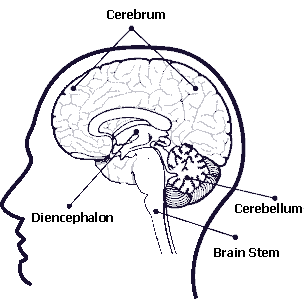
The study received widespread criticism from the pain research community, including an article by several influential scientists rebutting the claims. For example, in March 2015 a group at Oxford University published a study in Nature Neuroscience claiming that the dorsal posterior insula was the “ouch center” of the brain. Recently, a number of high-profile papers reporting brain areas specific to pain have come under fire.

Pain’s locus in the brain is hotly contested subject.

“It is very tempting to put someone in the scanner, give a stimulus causing pain and record a brain response that-often, but not always-correlates with the intensity of the pain perceived, and conclude that the response reflects pain,” says Giandomenico Iannetti, a neuroscientist at University College London. Because the pain-related regions are involved in so many other cognitive processes, most researchers are adopting the view that the pain matrix is more generally responsible for processing attention-grabbing stimuli.Īccording to the study’s authors, the idea of a pain matrix is still pervasive and drives many incorrect scientific conclusions. “Altogether, the story becomes convincing,” Mouraux says. For example, in 2011 Mouraux and his colleagues discovered similar activations in the brains of healthy individuals to both painful and non-painful stimuli. However, this is not the first piece of evidence that these areas are not specific to pain. “If this was the only evidence that we had so far, I would be a bit more cautious in the interpretation,” says André Mouraux, a neuroscientist at Université Catholique de Louvain in Belgium who was not involved in the study. The scientists found similar patterns of activity in the brain areas widely associated with pain in both groups, providing evidence that the pain matrix may be responding to other senses. In the most recent study, published this week in JAMA Neurology, neuroscientists at the University of Reading and University College London scanned the brains of two individuals born without the ability to feel pain and four healthy volunteers while they received painful “pinprick” stimuli. In recent years, however, a number of studies have cast doubt on the idea that these brain areas are specifically coding for pain. Others have suggested that brain imaging could be an objective measure of pain for diagnosis and drug development, and even as evidence in court. Some researchers have since applied this concept to conclude that that rejection hurts because social pain and physical pain share similar mechanisms in the brain. Over the years neuroscientists have identified the “pain matrix,” a set of brain areas including the anterior cingulate cortex, thalamus and insula that consistently respond to painful stimuli. Despite recent advances in uncovering the underlying mechanisms of pain perception in the brain, scientists are still debating the questions of where and how pain is processed. Individuals with chronic pain often experience a host of additional negative effects on mental and physical health. On the other hand, too much pain can be debilitating.

Without the ability to sense the effects of a broken bone or burned skin, it’s difficult to avoid harm. The few people born without the ability to feel it must approach day-to-day tasks with extra caution.

Pain is an unpleasant but necessary sensation.


 0 kommentar(er)
0 kommentar(er)
